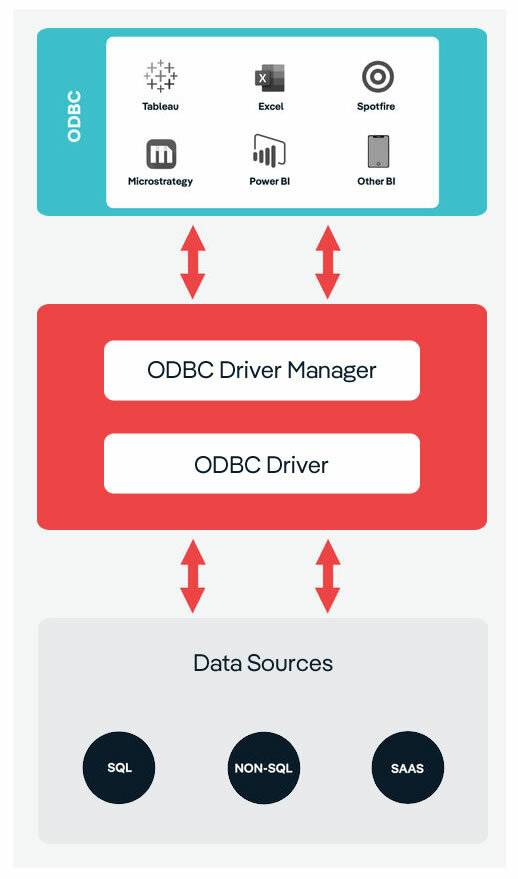What is ODBC – Open Database Connectivity

What is Open Database Connectivity?
Open Database Connectivity (ODBC) is an open standard Application Programming Interface (API) for accessing a database. In 1992, Microsoft partners with Simba to build the world’s first ODBC driver; SIMBA.DLL, and standards-based data access was born. By using ODBC statements in a program, you can access files in a number of different common databases. In addition to the ODBC software, a separate module or driver is needed for each database to be accessed.
ODBC Specification
The latest version of ODBC specification is available from Microsoft‘s website.
For your convenience, you can also download a PDF version of the current ODBC 3.8 Specification.
ODBC History
Microsoft introduced the ODBC standard in 1992. ODBC was a standard designed to unify access to SQL databases. Following the success of ODBC, Microsoft introduced OLE DB which was to be a broader data access standard. OLE DB was a data access standard that went beyond just SQL databases and extended to any data source that could deliver data in tabular format. Microsoft’s plan was that OLE DB would supplant ODBC as the most common data access standard. More recently, Microsoft introduced the ADO data access standard. ADO was supposed to go further than OLE DB, in that ADO was more object oriented. However, even with Microsoft’s very significant attempts to replace the ODBC standard with what were felt to be “better” alternatives, ODBC has continued to be the de facto data access standard for SQL data sources. In fact, today the ODBC standard is more common than OLE DB and ADO because ODBC is widely supported (including support from Oracle and IBM) and is a cross platform data access standard. Today, the most common data access standards for SQL data sources continue to be ODBC and JDBC, and it is very likely that standards like OLE DB and ADO will fade away over time.
ODBC Overview
ODBC has become the de-facto standard for standards-based data access in both relational and non-relational database management systems (DBMS). Simba worked closely with Microsoft to co-develop the ODBC standard back in the early 90’s. The ODBC standard enables maximum interoperability thereby enabling application developers to write a single application to access data sources from different vendors. ODBC is based on the Call-Level Interface (CLI) specifications from Open Group and ISO/IEC for database APIs and uses Structured Query Language (SQL) as its database access language.
ODBC Architecture
The architecture of ODBC-based data connectivity is as follows:

ODBC Enabled Application
This is any ODBC compliant application, such as Microsoft Excel, Tableau, Crystal Reports, Microsoft Power BI, or similar application (Spreadsheet, Word processor, Data Access & Retrievable Tool, etc.). The ODBC enabled application performs processing by passing SQL Statements to and receiving results from the ODBC Driver Manager.
ODBC Driver Manager
The ODBC Driver Manager loads and unloads ODBC drivers on behalf of an application. The Windows platform comes with a default Driver Manager, while non-windows platforms have the choice to use an open source ODBC Driver Manager like unixODBC and iODBC. The ODBC Driver Manager processes ODBC function calls, or passes them to an ODBC driver and resolves ODBC version conflicts.
ODBC Driver
The ODBC driver processes ODBC function calls, submits SQL requests to a specific data source and returns results to the application. The ODBC driver may also modify an application’s request so that the request conforms to syntax supported by the associated database. A framework to easily build an ODBC drivers is available from Simba Technologies, as are ODBC drivers for many data sources, such as Salesforce, MongoDB, Spark and more. The Simba SDK is available in C++, Java and C# and supports building drivers for Windows, OSX and many *Nix distributions.
Data Source
A data source is simply the source of the data. It can be a file, a particular database on a DBMS, or even a live data feed. The data might be located on the same computer as the program, or on another computer somewhere on a network.